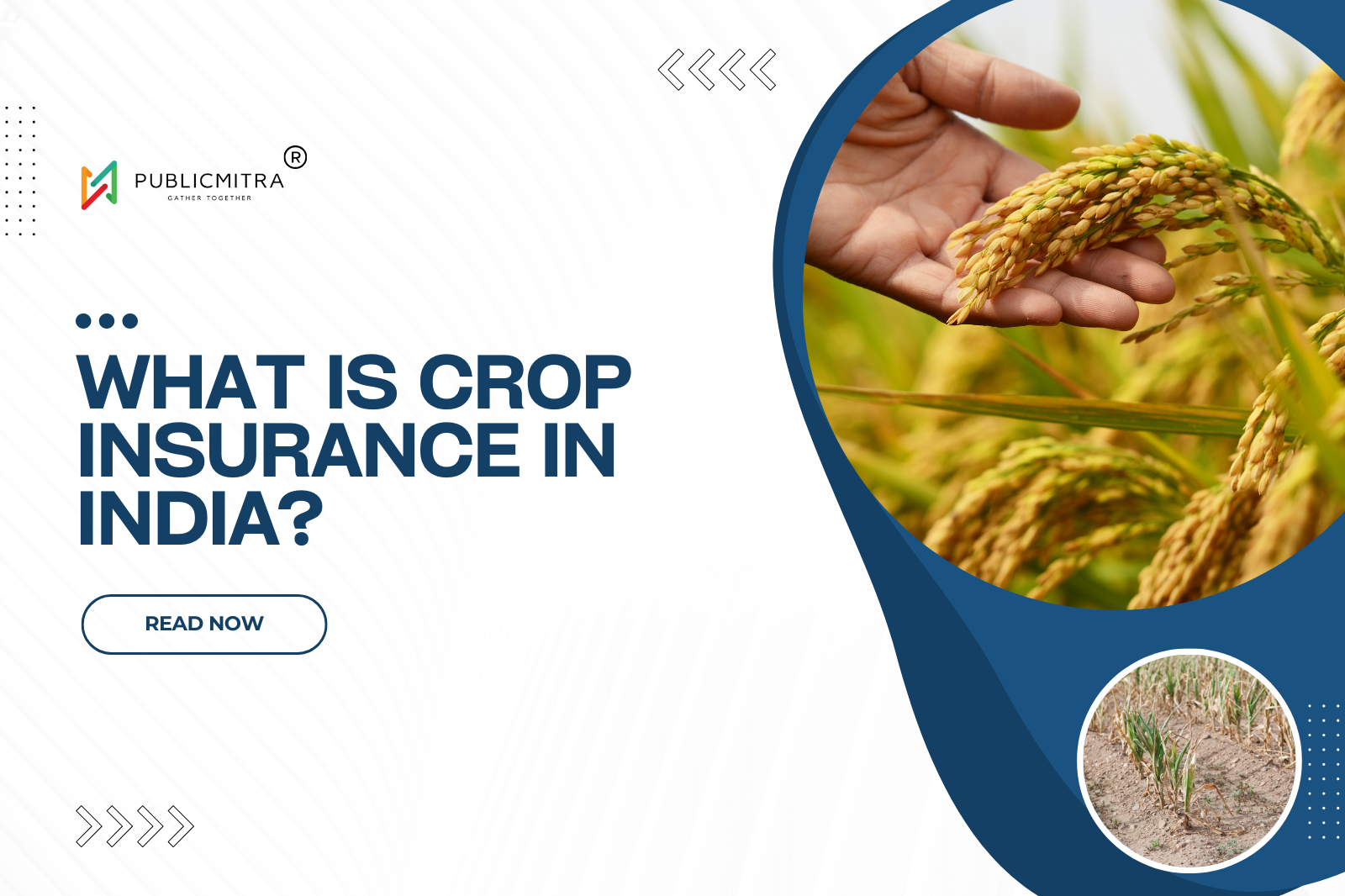What Is Crop Insurance In India?
Hailstorm, untimely showers, pest attack, natural calamities, rising heat – there are more challenges than we can imagine in agriculture and India is not exception to this. No doubt, all these take a toll on not only crop production but also farmer’s income. As agriculture sector is an indispensable pillar of Indian economy, loss of crop directly affects the economy as well.
The silver lining in the cloud is crop insurance. To reduce farmer’s misery and improve their welfare, it is important to get some degree of protection in the form of crop insurance.
Crop Insurance in India
Crop insurance is a way to protect agriculturists against monetary losses due to crop failures. It covers pre-sowing as well as post-harvest losses due to uncertain showers, rainfall deficit etc. In India, crop insurance is offered to the farmers in the form of Pradhan Mantri Fasal Bima Yojna.
What is Pradhan Mantri Fasal Bima Yojna?
Pradhan Mantri Fasal Bima Yojna was launched by government of India in the year 2016. It is a crop insurance scheme wherein insurance companies in India were to provide insurance coverage to farmers against crop losses. The scheme is farmer centric in which major portion of the insurance premium is paid by the government. The insurance cover aims to offer financial aid to agriculturists in case of crop loss due to natural calamity.
The risks covered in the scheme are – prevention of sowing, damage of standing crop due to inescapable risks like flood, drought or landslide, etc. in addition to post harvest losses.
Before we delve deeper, let us get to know a little about the history of crop insurance in India.
In October 1965, the Government of India pronounced to introduce Crop Insurance Bill and a model scheme to empower States to introduce crop insurance if they wanted. In 1970, the draft Bill and the model scheme were assigned to an expert committee headed by Dr. Dharm Narain.
For the next two decades, the need to crop insurance continued to be discussed. It wasn’t before 1972 that the first ever crop insurance scheme was launched. In 1972-73, the ‘General Insurance’ department of Life Insurance Corporation of India brought in crop insurance on H-4 cotton in Gujarat. In the following years, the scheme was expanded to groundnut, wheat and potato and was implemented in several states.
Types of Crop Insurance
Crop Insurance is categorized into three types:
- Multiple Peril Crop Insurance – This scheme offers safety net to the farmers against weather related losses in crop production, for example fire, flood, drought. The MPCI scheme should be purchased before the crop is planted.
- Actual Production History – It covers the losses due to pests/insects, wind, hailstorm. In addition, it also includes coverage for lower yield and payback for the difference in the estimated and real production.
- Crop Revenue Coverage – This type of coverage compensates farmers for not just crop yield but the difference in the estimated and the actual revenue generated from the production.
What Does the Crop Insurance Cover?
- Local calamities – Hailstorm, landslide affecting isolated farms in specified region.
- Sowing risk – Any issue in sowing due to monsoon deficit or unfavourable seasons.
- Standing crop loss – Crop production loss due to flood, cyclone, hailstorm, dry spells.
- Post harvest losses – Losses up to maximum two weeks from harvesting.
Significance of Crop Insurance in India
Though the need of Crop Insurance was felt five decades back; however, actual expansion of the scheme took place in the year 2016. The scheme i.e., Pradhan Mantri Fasal Bima Yojna is the third largest crop insurance scheme in the world. In the past 6 years, the scheme has garnered huge popularity with share of farmers (including non-loanee, marginalized and small) increasing by 282% since its inception. Considering that agriculture sector is one of the key pillars of the Indian economy, it is incumbent upon the government that the farmers are given due assurance of return from agriculture. The crop insurance scheme, primarily, PMFBY is one key step towards this.










